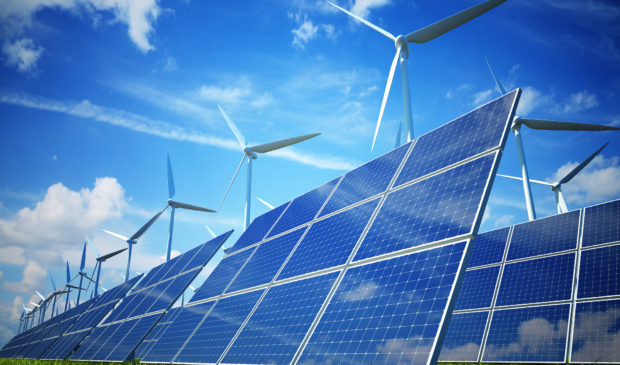Oversight committee discusses making city carbon-free by 2030
Friday, December 2, 2016 by
Chad Swiatecki “Can Austin be a carbon-free energy city by 2030?” was one of the more prominent questions up for debate Wednesday as the City Council’s Energy Utility Oversight Committee got its first update on the 10-year road map for Austin Energy’s resource needs and climate protection objectives.
The discussion came during a presentation from Khalil Shalabi, Austin Energy’s vice president of energy market operations and resource planning, on the most recent progress in meeting the goals of the utility’s “Energy Resource, Generation and Climate Protection Plan.”
As Shalabi summarized where the utility stands on its renewable energy goals and possible plans to decommission the coal-burning Fayette Power Project and the natural gas powered Decker Creek Power Station, Council Member Leslie Pool brought up a goal from a 2014 Council resolution that stated that Austin will aim to become a carbon-free city by 2030.
The carbon-free goal refers specifically to making all resources controlled by Austin Energy free of carbon emissions, which are linked to global climate change, by 2030. The goal does not mean that the city as a whole, including its residents and businesses, would produce no carbon in their daily activities.
That goal was later studied by Austin Energy and found to be unaffordable based on market forecasts at the time, and it wasn’t included in the current version of the 10-year plan that is in the early stages of its biennial update.
The city is on pace to have renewable energy account for 55 percent of its power production by 2025, but Shalabi said that achieving zero carbon would mean retiring all of the city’s power plants in a short time frame, making that goal unaffordable.
“Maybe that’s something that should be deferred to the next two years, because we know so much more every two years about where the market is headed,” Shalabi said. “It is in the back of our minds, ‘When are we going to reach (carbon-free)?’”
Pool responded by saying that the 2014 directive, which was passed prior to the current Council’s swearing in, remains in effect and should be an Austin Energy goal even if it’s not part of the current resource plan.
“We need to be reminded there are goals we’re going for,” she said. “We’re where the change can happen.”
Mayor Pro Tem Kathie Tovo agreed that the resolution, which included several aggressive targets for making Austin a national clean energy leader, will be a stated goal for the city unless it is later revised or countered.
The panel responsible for leading the resource plan update has just started its meeting schedule and will spend the next two months determining Austin Energy’s priorities through 2027. Monthly updates to the Council’s oversight committee on initial findings and preliminary recommendations will lead to a formal update to the plan by Council early next year.
That process will look at the schedule for retiring the Fayette Power Project, the possible future of the Decker site as a place to generate renewable energy, adding more solar capacity to the city’s power portfolio and exploring advances in battery technology as a way to make renewable power generation more efficient.
“The big new area is in storage technology, and so this informal group will spend time looking at the state of play in storage and what the opportunities are,” said Mark Dreyfus, Austin Energy’s vice president of regulatory affairs and corporate communications. “That makes sense because storage is hot right now, and large-capacity storage makes renewables more viable because you can store what you generate to support peak load rather than losing it.”
Dreyfus said that the panel is still in the process of reviewing and synthesizing the information on far Austin Energy has progressed in meeting its long-term goals and doesn’t expect radical changes to the resource plan this time around.
“There may be some new goals that come out of this, but right now it’s about checking where we are at with the plan,” he said. “We’re two meetings in right now and sharing information. By the end, we’ll figure out if there are any recommended changes.”
This story has been corrected since publication. City Council’s goal of making Austin carbon-free applies to Austin Energy resources only, not the city as a whole.
Photo by Safe Ta Tonsley made available through a Creative Commons license.
The Austin Monitor’s work is made possible by donations from the community. Though our reporting covers donors from time to time, we are careful to keep business and editorial efforts separate while maintaining transparency. A complete list of donors is available here, and our code of ethics is explained here.
You're a community leader
And we’re honored you look to us for serious, in-depth news. You know a strong community needs local and dedicated watchdog reporting. We’re here for you and that won’t change. Now will you take the powerful next step and support our nonprofit news organization?







